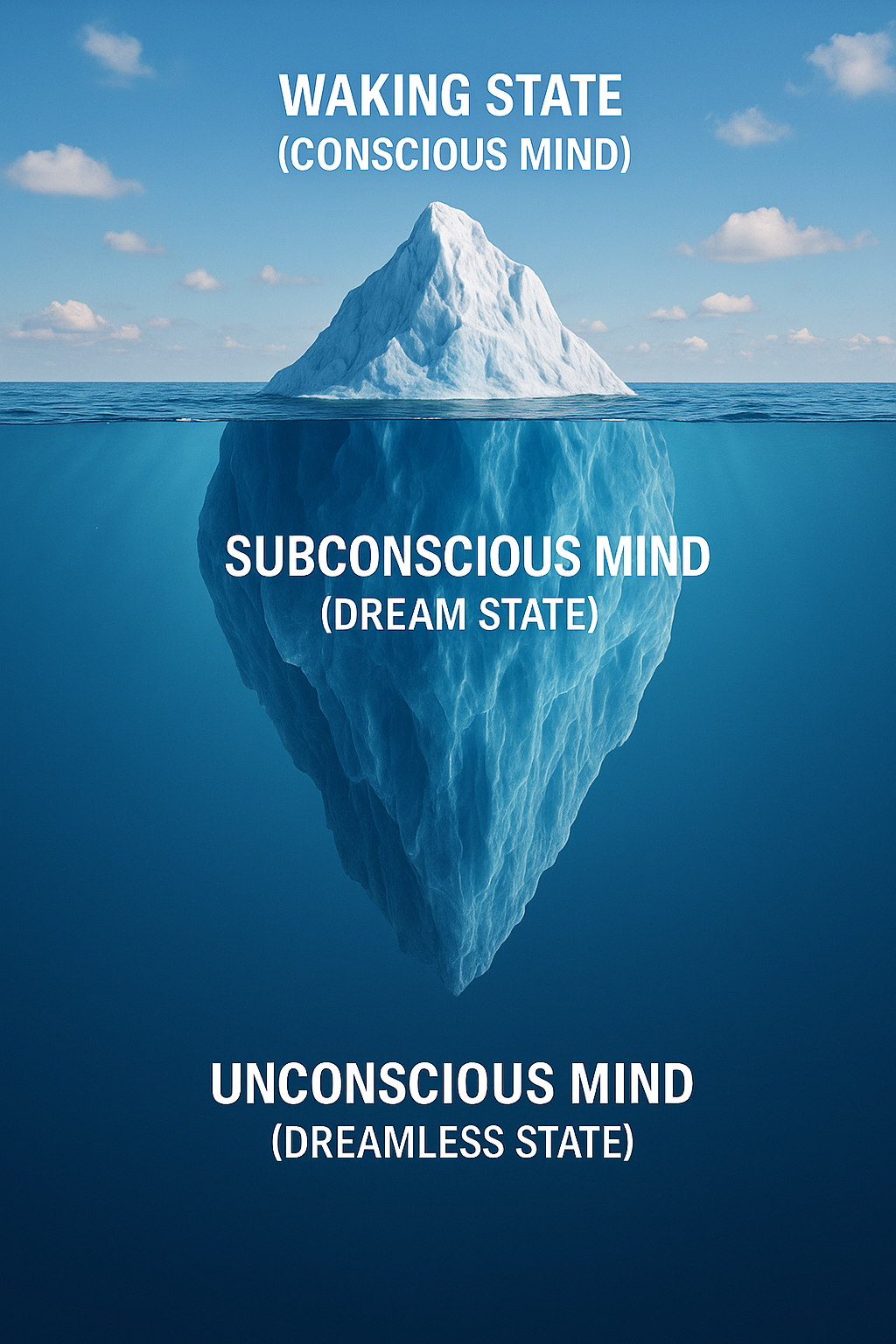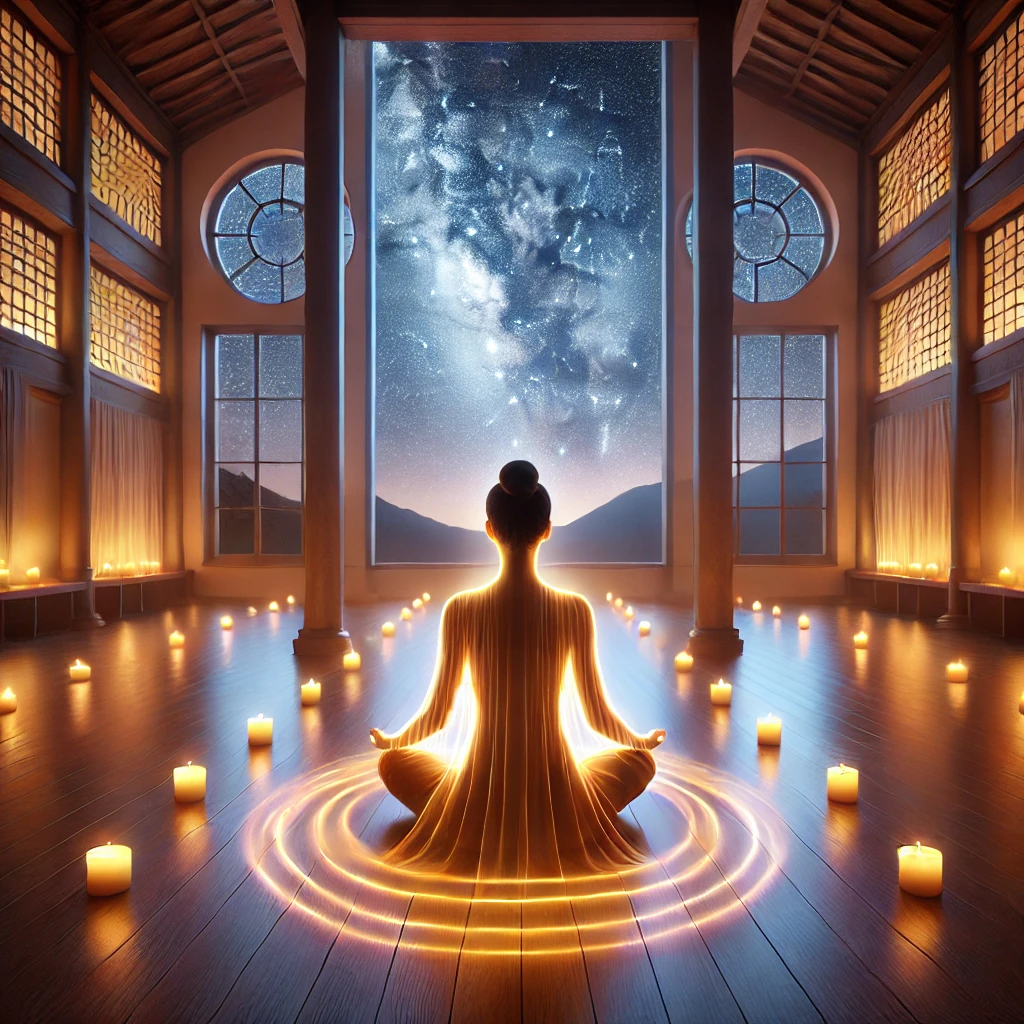Consciousness
Gross, subtle and subtlest mind
Introduction
Our mind is a vast and intricate landscape, encompassing various layers of consciousness. Understanding these layers — ranging from the gross mind to the most subtle — helps us recognize the nature of our awareness. Through practices like meditation and self-inquiry, we can journey through these layers, ultimately returning to the pure awareness that is our true essence. This journey is not only a path of self-discovery but also a way to achieve clarity, peace, and freedom.
1) The Gross Mind: The Waking State
The gross mind is closely linked to our conscious mind and the waking state. It is the surface level of our awareness, where we interact with the external world through our five senses. In this state, our awareness is directed outward, perceiving and reacting to the physical world around us. We identify ourselves with the body and the ego, often forgetting that we are the awareness observing these experiences. This external focus leads to desires and attachments, which in turn create a sense of separation and individuality.
In the waking state, we rely heavily on our senses to navigate the world, and our body serves as the key to our experience. But when we identify ourselves solely with the body and the senses, we lose sight of our true nature — awareness itself. This identification with the gross mind keeps us in a cycle of grasping at experiences, believing them to be who we are. This is how the concept of ‘I’ is created — from information we have gathered over time.
2) The Subtle Mind: The Dream State
As we move deeper into our consciousness, we enter the realm of the subtle mind, or the subconscious mind. This state is akin to the dream state, where our awareness shifts away from the physical body. Although a small part of our awareness remains in the body, most of it moves into the subconscious mind, where memories, desires, and unresolved patterns from our waking life are stored. Studies show that up to 95% of our daily activities are controlled by our subconscious mind.
The subconscious mind is like a vast basement with many rooms. One room contains our personal memories and stored experiences. But beyond our own room, there are other rooms — holding impressions and memories of others, and even collective patterns shared among all beings. Normally, we remain locked within our own room, believing it to be the entirety of our identity. But once we realize we are awareness — not the contents of the room — we begin to access deeper layers of universal knowledge and understanding.
3) The Most Subtle Mind: The Dreamless State
Deeper still lies the most subtle mind, which corresponds to the dreamless sleep state. This level is not filled with images or thoughts — it is a state of stillness, silence, and unmanifest potential. Here, all experiences dissolve. The ego and personality temporarily vanish, and yet a deep sense of being remains, though we often lose touch with it due to our identification with form and activity.
This most subtle mind is the foundation of the subconscious — a vast field of dormant vibrations, waiting to arise into form. It is more universal than individual. In deep sleep, we touch this state unknowingly, but through meditation and awareness practices, we can learn to enter it consciously. When we do, we discover that what seemed like emptiness is in fact a silent fullness — an unchanging presence.
To reach this state consciously is to explore our inner Self where awareness – without any disturbance – can be realized. To rest in this state consciously is what the yogis called Nirvikalpa Samadhi; the state of Self Understanding.
4) Awareness: The Ever-Present Light
Beyond all these states — waking, dreaming, and dreamless — is awareness itself. Awareness is not a state; it is the background of all states. It is that which witnesses the gross, the subtle, and the most subtle mind without being affected by any of them.
Awareness is unchanging, timeless, and ever-present. It is the light that illuminates the entire field of experience. Once we begin to recognize awareness as our true nature, we no longer cling to the passing thoughts, emotions, or identities. Instead, we rest as the witness of all movement, untouched and free.
This awareness is what allows us to see through the illusion of separation. It is the silent presence that holds everything. Meditation, self-inquiry, and mindfulness are practices that help us return to this source. As we dive deeper into our inner world — through the layers of mind — we slowly clean the basement of our subconscious, clearing away old patterns and memories that obscure our clarity. Awareness is the light that makes this inner cleansing possible.
Meditation: The Journey Back to the Self
Meditation is the conscious journey through all three layers of mind. It begins at the surface — becoming aware of thoughts and sensory input — then moves inward, through the subconscious, and finally into the most subtle mind. From there, we step beyond mind entirely into awareness.
This journey mirrors the process of sleep, but unlike ordinary sleep, meditation allows us to pass through these states with conscious presence. When meditation deepens to the point where all mental activity dissolves and only awareness remains, the state of Nirvikalpa Samadhi is attained — pure awareness without thought, form, or separation. In this state, the ego is transcended, and the Self is realized as boundless awareness.
Conclusion: The Return to Our True Self
The journey through the layers of the mind — from the gross mind to the most subtle mind, and ultimately to awareness — is the journey back to our true Self. It is the return to the essence of who we are, beyond all mental states, thoughts, and emotions. Meditation, self-inquiry, and mindfulness are the tools that allow us to recognize and rest in awareness, the light that illuminates all states of consciousness.
Each step along the way is an opportunity to know ourselves more deeply, to heal, and to awaken. As we clean the basement of the subconscious and recognize that we are not the mind, the body, or the ego—but the light that sees all — we begin to live with clarity, compassion, and freedom.
We are not the contents of our mind.
We are the awareness in which the mind arises.
In this state, we are free from the limitations of the mind and the ego. We experience a profound sense of peace, clarity, and unity with all beings. Awareness is not just something we experience; it is the very foundation of our existence. By recognizing and aligning with awareness, we return to our true nature, and in this return, we find the ultimate freedom.

